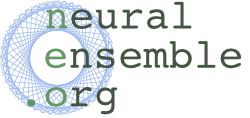We are pleased to announce the first public release of HoloViews, a free Python package for scientific and engineering data visualization:
http://ioam.github.io/holoviews
and version 2.0 of ImaGen, a free Python package for generating two-dimensional patterns useful for vision research and computational modeling:
http://ioam.github.io/imagen
HoloViews provides composable, sliceable, declarative data structures for building even complex visualizations of any scientific data very easily. With HoloViews, you can see your data as publication-quality figures almost instantly, so that you can focus on the data itself, rather than on laboriously putting together your figures. Even complex multi-subfigure layouts and animations are very easily built using HoloViews.
ImaGen provides highly configurable, resolution-independent input patterns, directly visualizable using HoloViews but also available without any plotting package so that they can easily be incorporated directly into your computational modeling or visual stimulus generation code. With ImaGen, any software with a Python interface can immediately support configurable streams of 0D, 1D, or 2D patterns, without any extra coding.
HoloViews and ImaGen are very general tools, but they were designed to solve common problems faced by vision scientists and computational modelers. HoloViews makes it very easy to visualize data from vision research, whether it is visual patterns, neural activity patterns, or more abstract measurements or analyses. Essentially, HoloViews provides a set of general, compositional, multidimensional data structures suitable for both discrete and continuous real-world data, and pairs them with separate customizable plotting classes to visualize them without extensive coding.
ImaGen 2.0 uses the continuous coordinate systems provided by HoloViews to implement flexible resolution-independent generation of streams of patterns, with parameters controlled by the user and allowing randomness or other arbitrary changes over time. These patterns can be used for visual stimulus generation, testing or training computational models, initializing connectivity in models, or any other application where random or dynamic but precisely controlled streams of patterns are needed.
Features:
- Freely available under a BSD license
- Python 2 and 3 compatible
- Minimal external dependencies -- easy to integrate into your workflow
- Declarative approach provides powerful compositionality with minimal coding
- Include extensive, continuously tested IPython Notebook tutorials
- Easily reconfigurable using documented and validated parameters
- Animations are supported natively, with no extra work
- Supports reproducible research -- simple specification, archived in an IPython Notebook, providing a recipe for regenerating your results
- HoloViews is one of three winners of the 2015 UK Open Source Awards
To get started, check out ioam.github.io/holoviews and ioam.github.io/imagen!
Jean-Luc Stevens
Philipp Rudiger
Christopher Ball
James A. Bednar

No comments:
Post a Comment